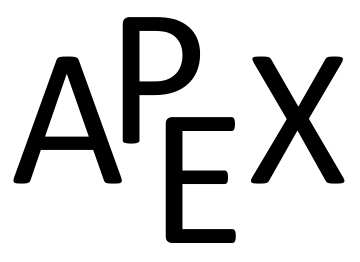From the outset, we should recognize that knowing
how to set up this problem is probably more important than knowing
how to compute the integrals. The iterated integral to come is not “hard” to evaluate, though it is long, requiring lots of algebra. Once the proper iterated integral is determined, one can use readily available technology to help compute the final answer.
The region \(R\) that we are integrating over is bound by \(0\leq r\leq \cos(3\theta)\text{,}\) for \(0\leq \theta\leq\pi\) (note that this rose curve is traced out on the interval \([0,\pi]\text{,}\) not \([0,2\pi]\)). This gives us our bounds of integration. The integrand is \(z=1-x+0.1y\text{;}\) converting to polar, we have that the volume \(V\) is:
\begin{equation*}
V = \iint_R f(x,y)\, dA = \int_0^\pi\int_0^{\cos(3\theta)}\big(1-r\cos(\theta) +0.1r\sin(\theta) \big)r\, dr\, d\theta\text{.}
\end{equation*}
Distributing the \(r\text{,}\) the inner integral is easy to evaluate, leading to
\begin{equation*}
\int_0^\pi \left(\frac12\cos^2(3\theta)-\frac13\cos^3(3\theta)\cos(\theta) +\frac{0.1}3\cos^3(3\theta)\sin(\theta) \right)\, d\theta\text{.}
\end{equation*}
This integral takes time to compute by hand; it is rather long and cumbersome. The powers of cosine need to be reduced, and products like
\(\cos(3\theta)\cos(\theta)\) need to be turned to sums using the Product To Sum formulas in the back cover of this text.
We rewrite \(\frac12\cos^2(3\theta)\) as \(\frac14(1+\cos(6\theta))\text{.}\) We can also rewrite \(\frac13\cos^3(3\theta)\cos(\theta)\) as:
\begin{align*}
\frac13\cos^3(3\theta)\cos(\theta) \amp = \frac13\cos^2(3\theta)\cos(3\theta)\cos(\theta)\\
\amp = \frac13\frac{1+\cos(6\theta)}2\big(\cos(4\theta)+\cos(2\theta)\big)\text{.}
\end{align*}
This last expression still needs simplification, but eventually all terms can be reduced to the form
\(a\cos(m\theta)\) or
\(a\sin(m\theta)\) for various values of
\(a\) and
\(m\text{.}\)
We forgo the algebra and recommend the reader employ technology, such as WolframAlpha®, to compute the numeric answer. Such technology gives:
\begin{equation*}
\int_0^\pi\int_0^{\cos(3\theta)}\big(1-r\cos(\theta) +0.1r\sin(\theta) \big)r\, dr\, d\theta = \frac{\pi}{4} \approx 0.785u^3\text{.}
\end{equation*}
Since the units were not specified, we leave the result as almost
\(0.8\) cubic units (meters, feet, etc.) Should the artist want to scale the piece uniformly, so that each rose petal had a length other than 1, she should keep in mind that scaling by a factor of
\(k\) scales the volume by a factor of
\(k^3\text{.}\)

